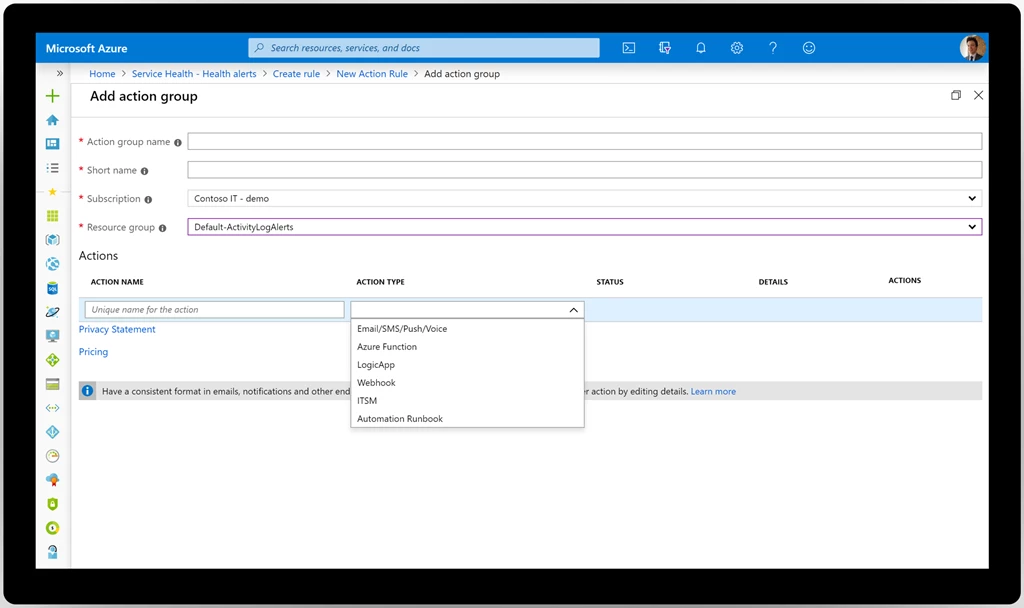Preparing for the unexpected is part of every IT professional’s and developer’s job. Although rare, service issues like outages and planned maintenance do occur. There are many ways to stay informed, but we’ve identified three effective approaches that have helped our customers respond quickly to service issues and mitigate downtime. All three take advantage of Azure Service Health, a free Azure service that lets you configure alerts to notify you automatically about service issues that might have an impact on your availability.

1. Start simple with an email alert to catch all issues
If you’re new to setting up Service Health alerts, you’ll notice that there are many choices to make. Who should I alert? About which services and regions? For which types of health events? Outages? Planned maintenance? Health advisories? And what type of notification should I use? Email, SMS, push notification, webhook, or something else?
The best way to get started with Service Health alerts is to start simple. Set up an alert that will email your key operations professionals about any service issue that could affect any service or region. Since Service Health is personalized, the alert will only fire if there’s an impact to a service or region you use, so you don’t have to worry about unnecessary notifications.

Once you’ve set up your email alert, see how it goes. Maybe it’s all you need. Simple is good. But if you find that you’re frequently routing information from the notifications you receive to other teams, consider setting up additional alerts for those teams. You can also explore more sophisticated methods of alerting like the following scenarios.
2. Set up a mobile push alert for urgent issues
Not all service issues are created equal. If there’s a potential impact to a critical production workload, you’ll want to find out and respond as quickly as possible. In those situations, email might be insufficient. Instead, we recommend configuring Service Health alerts to send mobile push notifications through the Azure mobile app.

When you’re setting up a new alert, you’ll see an option in the UI for Azure app push notifications and SMS. We recommend push notifications over SMS because push notifications can contain more information and will provide you with more substantial updates when there’s a service issue.
With a push notification, you’ll learn about critical service issues right on your mobile device and be able to act immediately to start mitigating any impact to your workloads.
3. Connect our alerts with your IT service management tools
Finally, many customers already have ticketing systems and IT service management (ITSM) tools in place. If you already use one of these tools to manage your teams and work, we recommend setting up Service Health alerts using the webhook or ITSM integration. This will allow you to automatically create and assign tickets for Azure service issues.
Two key considerations when setting up a Service Health alert are the appropriate team to notify and the level of urgency of the message. You may wish to route alerts for certain services to specific teams, for example sending Azure SQL Database issues to your database team. You can also route alerts due to region, for example, sending issues in West Europe to your Europe lead. You may even wish to distinguish by subscription, for example, dev/test vs. production. Another important consideration is the level of urgency of the message. You’ll have more time to respond to planned maintenance and health advisories, which are communicated weeks and months in advance, than outages, which by their very nature can only be communicated at the time of the event. Depending upon the urgency you may wish to flag the communication differently in your system so you alert on-call teams.
Set up your Service Health alerts today
Whichever Service Health alerting approach you choose, the important thing is that you’re prepared for the unexpected. Set up your Azure Service Health alerts today in the Azure portal and for more information visit the Azure Service Health documentation. Let us know if you have a suggestion by submitting an idea in our feedback forums here.
